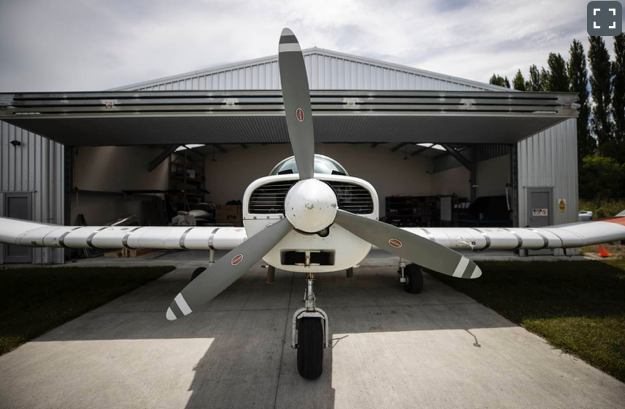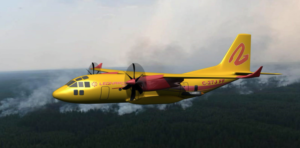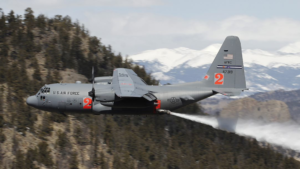
NZ aviation tech company Skybase develops pilotless planes to fight bushfires
Kurt Bayer

A New Zealand aviation technology company is developing pilotless planes to fight bushfires from the skies.
Canterbury-based Skybase is converting aircraft to fly remotely in a world-leading move designed to revolutionise firefighting.
It involves putting high-tech artificial-intelligence computer systems inside Kiwi-made Fletcher top-dressing planes and keeping pilots safely behind computer screens on the ground.
The move will mean when conditions – such as poor weather, fading light or firefighter fatigue – ground planes and helicopters, the converted drone aircraft can still take to the air and drop vast litres of water and fire retardant on flames and hotspots.

In a New Zealand-first, the Civil Aviation Authority (CAA) granted Skybase certification in May 2022 to carry out remotely operated test flights on the condition a pilot was on board.
“That was a key moment for aviation in New Zealand,” said Skybase founder Michael Read.
The company, which was founded in Christchurch in 2017, has been testing the technology out of Rangiora airfield, 30km north of the city.
Its long-term vision is for the aircraft to be completely autonomous. But for now, they are reliant on pilots to supervise and step in when needed.
The remote pilot on the ground has to be qualified in the New Zealand-made Pacific Aerospace Fletcher – often described as a “workhorse” utility plane – but can be based anywhere in the world.
Pilots fly as if they’re inside the cockpit, talking to air traffic control, and watching several monitors.
“You’re doing everything from the ground that you would do from the air,” said Read, a former Royal Australian Airforce pilot.
The ground technology is connected to the aircraft through several communication modes, including tracking antennae, satellite and mobile phone network.

And the development of Elon Musk’s Starlink satellite internet constellation could prove a “gamechanger” in the future.
Read envisages the flight autonomy upgrade system for existing aircraft, dubbed SOFI, also becoming useful for other sectors, including agriculture, mapping, surveillance, cargo operations, first responders, medevac missions and natural disaster responses.
The plane can carry 1500kg and could air-drop emergency supplies after floods or cyclones and in weather deemed too dangerous for manned planes.
“There are a lot of reasons to do this technology other than aerial firefighting,” Read said.
“But right now, that is the focus because [fires] are extremely dangerous and increasingly prevalent.”
He cites key statistics to support his arguments, including that around 80 per cent of all aviation accidents are caused by humans and, in 2021, 17 per cent of the world’s carbon emissions came from uncontained bushfires.

The ability for pilotless planes to be on standby 24/7 could help eliminate wildfires “as a catastrophic threat”, Read said.
“Speed is the key to fighting uncontrolled fires.”
But about 75 per cent of the time, safety regulations around risk factors such as poor visibility mean planes are grounded while the fire burns on.
Most blazes start late in the day when it’s hot and thunderstorms are active.
And overnight, when manned aircraft aren’t able to fly, can be the best time to fight fires, with lower winds and temperatures.
“This technology changes what is possible, unlocking flight at times or in places where it wouldn’t otherwise be possible if a pilot was on board. It increases safety and capability, but also commercial returns,” said Read.
“Not having a human pilot on board means the risk benefit is very favourable.”
Skybase expects SOFI units to be rolled out commercially in 2024.
SOURCE: https://www.nzherald.co.nz/nz/nz-aviation-tech-company-skybase-develops-pilotless-planes-to-fight-bushfires/BHT6EWRHMBHF7G33V4DHUIA27Q/


